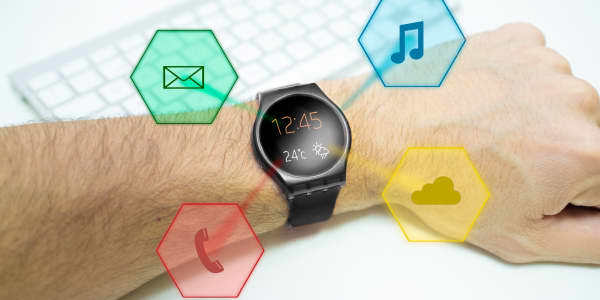The bottom of the financial pyramid, a term reportedly coined by U.S. President Franklin Roosevelt in 1932, refers to the world's lowest income-level group, one that spans more than 4 billion people worldwide.
Many experts believe these individuals should be given a chance to participate in the global economy as both consumers and entrepreneurs. In his book 'The Fortune at the Bottom of the Pyramid,' University of Michigan professor C. K. Prahalad discusses business models that have tapped into this group by developing market-specific products with the needs of the poor in mind.
BoP Hub, a Singapore-based non-profit venture, engages in Prahalad's philosophy by helping social enterprises form partnerships with the private sector to create a niche marketplace for the poor.
"Through job creation and enterprise development, poor communities gain access to income-generating opportunities; their economic participation in the formal economy greatly improves their livelihoods and helps to break the endemic cycle of poverty," said Divya Chandran, BoP Hub's communications manager.
In this slideshow, we bring you 10 innovative technologies that cater to the base of the pyramid. While many of these products remain out of reach price-wise for the majority of individuals, most can be purchased by governments or non-profit organizations and distributed through communities.
By CNBC's Nyshka Chandran. Posted 21 April 2014
Plasma water sanitation system - Advanced Innovation Center Chile
According to the World Trade Organization, more than 3 million people die every year from water-related causes. This water purifying system aims to change that by transforming polluted water into a safe drinking source.
How? The polluted water is first turned into a liquid and gas stream through a pressure drop. Then, the biphasic stream is transformed into non thermal plasma where all live microorganisms are deactivated, producing drinking water free of bacterias and viruses.
Speaking to CNBC, AIC Chile said it expects the first units to be deployed by the end of the year.
Edible algae - EnerGaia
This Thai start-up grows a type of algae known as spirulina on the rooftop of Bangkok's Novotel hotel.
The slimy green jelly is known for its highly nutritious properties and has been recognized by the United Nations as a means of combating hunger and malnutrition.
The algae is harvested three times a week using a unique closed bioreactor system that relies on the injection of forced air for aeration and mixing while filtration keeps contaminants out.
Infant warmers - Embrace
Resembling a mini-sleeping bag, this portable incubator reduces the risk of hypothermia for newborns by providing a constant temperature for up to six hours without a continuous electricity source.
The warmer contains phase-change material, a wax-like substance that can be heated using a hot water heating unit. Once heated, it slowly releases warmth over time.
While most rural hospitals can't afford to buy traditional incubators for $20,000, the infant warmer provides a sustainable solution at $300.
Urine-powered electricity - Duro-Aina Adebola, Akindele Abiola, Faleke Oluwatoyin, Bello Eniola
In 2012, a group of 14-year old Nigerian girls developed a generator that can provide up to six hours of power on one liter of urine.
First showcased in Lagos at the 4th annual Africa Maker Faire, the system essentially separates urine into nitrogen, water and hydrogen through a four-step process. The end result is purified hydrogen gas that is pushed into the generator.
However, details remain unknown on how many watts are generated or what the electricity could power.
Food scanner - TellSpec
This handheld product can quickly inform you about calories, macronutrients, allergens and other ingredients in your food.
The device has three components: a pocket-sized scanner to capture the spectrum of the food, a unique algorithm to analyze the data, and an app to report the findings on your smartphone computing device.
The first prototypes are being delivered in the summer and final production units, which are expected to be about the size of a computer mouse, due by year end.
Hollow flashlight - Ann Makosinski
This isn't your typical flashlight.
Powered solely by body heat, the device is based on the idea of Peltier tiles, where energy is created when one side is heated and the other side is cooled. Inside the flashlight air acts as a cooling agent; once the hand generates enough heat on the outside, the temperature achieves the necessary duality.
The creator? A 15-year old Canadian student who says the device cost her $26 to make and can likely be priced cheaper if it enters mass production.
BRCK - Ushahidi
Living up to its namesake, BRCK is a cloud-managed router that helps users access the internet from any location.
The Kenya-based non-profit launched the product to help Africans get online in times of life-threatening situations such as natural disasters and civil violence.
Described as "a backup generator for the internet" by its founders, the device is able to switch between Ethernet, Wifi, and 3G or 4G networks and holds about 16 GB of memory.
Distribution drones - Garuda Robotics
As the evolution of unmanned aerial vehicles (UAVs) fast evolves, Singapore's Garuda Robotics wants to provide drones as a distribution service to governments and first-responders.
With search and rescue missions often taking place in remote locations, fleets of drones can be used to deliver food and relief packages and even locate victims. Controllers will be able to create their own flight paths and test them out using simulations.
W.Afate 3D printer - WoeLab
In the West African city of Lome, founder Kodjo Afate Gnikou grew tired of letting growing piles of discarded electronic equipment go to the landfill. So, he decided to create the first 3D printer made from e-waste.
After raising $4,000 on crowdfunding site Ulule, he built the printer for a mere $100. The project is part of Afate's greater plan to send the 3D printer to Mars, where he hopes it will build a variety of structures from recycled parts.
High-altitude balloons – Google X
Google X, the semi-secret lab dedicated to advancements in technology, has developed a network of balloons that travel the stratosphere to provide Internet access to all parts of the world.
Each balloon uses antennas equipped with radio frequency technology which allows people to connect to the network using a unique Internet antenna.
Dubbed 'Project Loon,' the group announced in April that one of its balloons had circumnavigated the Earth in 22 days.




